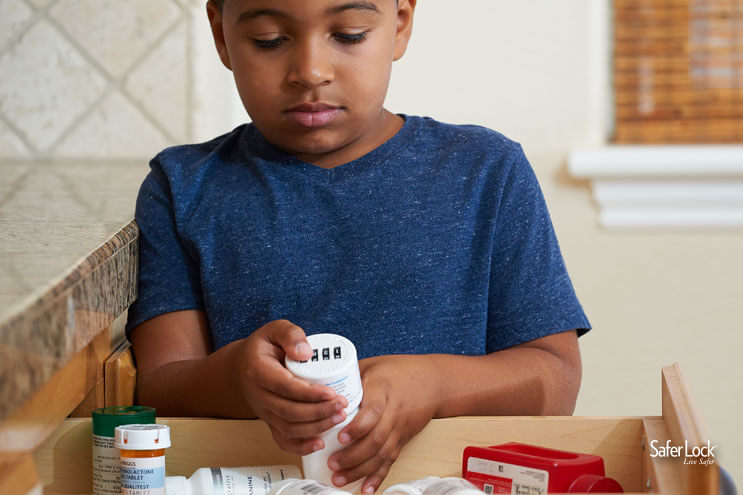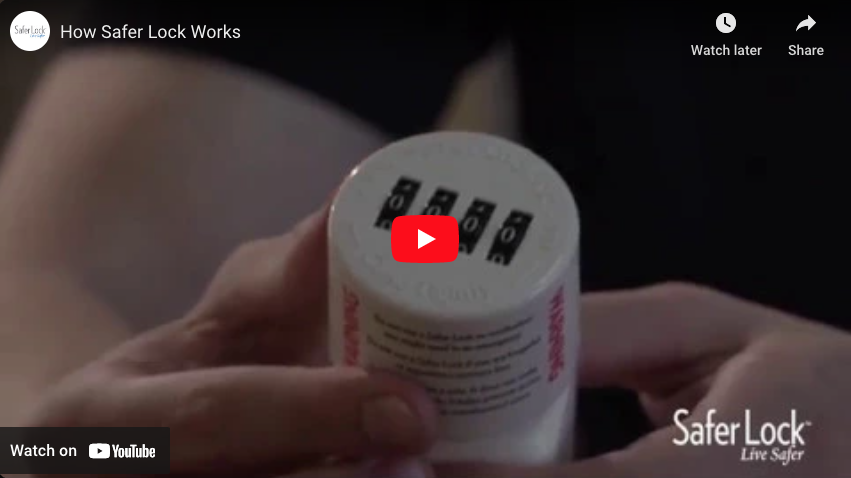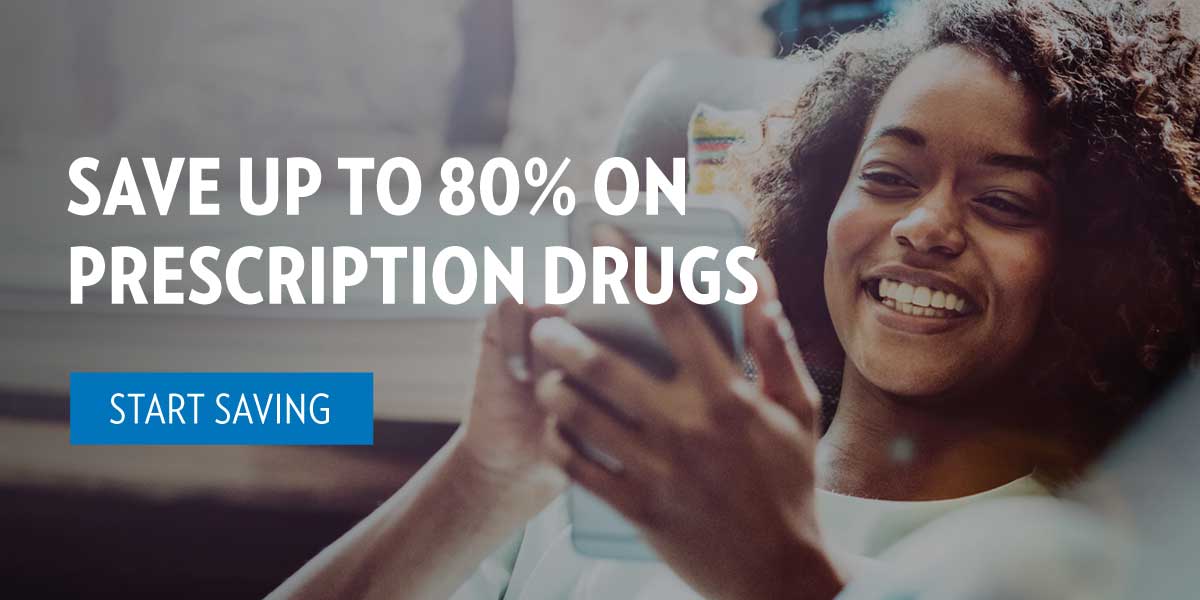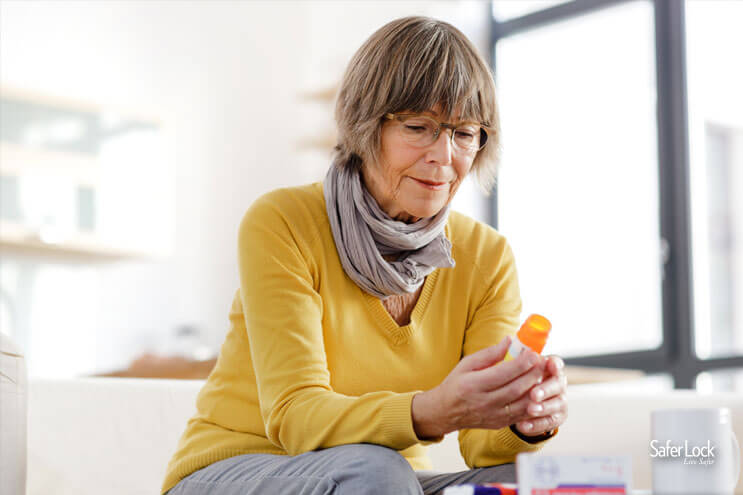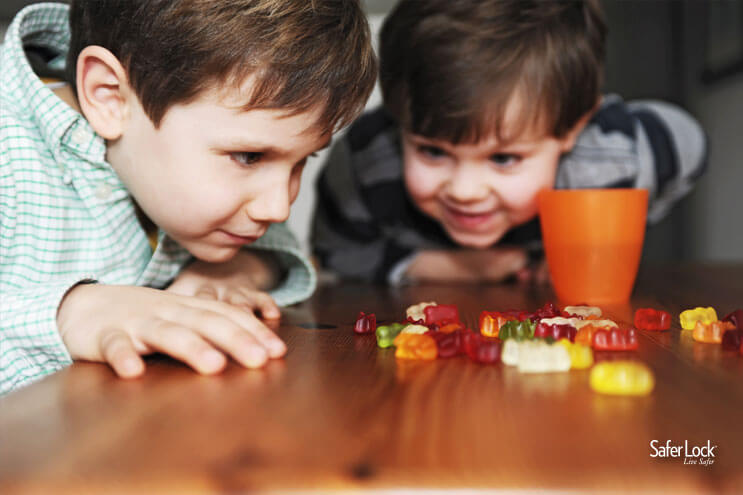Abuse-deterrent packaging is a tool to help you secure powerful prescription medications, such as opioid painkillers. But just how effective are these locking cap technologies? Can they really protect your family from accidental poisoning and prescription drug misuse?
The FDA thinks so.
FDA Supports Innovation in Abuse Deterrent Packaging
In 2016, the FDA developed an Opioid Action Plan to reduce the impact of opioids on the American public. FDA Commissioner Scott Gottlieb, M.D. has stated that one of his highest priorities is to take whatever steps necessary to reduce the scope and human tragedy created by the opioid epidemic, including supporting new innovations in opioid packaging and storage.
“We believe that innovation in packaging, storage, and disposal could have a meaningful impact on preventing or deterring misuse, abuse, or inappropriate access to prescription opioids – especially when coupled with additional efforts that the FDA and others are undertaking to reduce the scope of the opioid epidemic,” stated Gottlieb.
The Opioid Problem
Opioid painkillers are commonly prescribed for both acute and chronic pain. In 2016, approximately 216 million prescriptions for opioid painkillers were dispensed from pharmacies in the U.S.
Prescription opioids are vulnerable to misuse and come with the risk of misuse, dependence, abuse, and even overdose death.
Many prescription opioids are legally prescribed, but end up in the wrong hands. According to the National Survey of Drug Use and Health, 53.7% of individuals aged 12 and older who misused prescription painkillers in the last year obtained them from a friend or relative.
Young children living in households with opioid prescriptions are at an increased risk of accidental poisoning and overdose. The number of children admitted to hospitals for opioid overdose has nearly doubled since 2004, according to a study published in the journal Pediatrics in March 2018.
Only 32.6% of households with young children and 11.7% of households with older children are storing their prescription opioids in a locked or latched place.
One of the solutions to this problem is to prevent unauthorized access to opioids with new abuse-deterrent packaging for prescription opioids.
What is Abuse Deterrent Packaging?
Abuse-deterrent packaging is a term that covers innovative new medication packaging and storage solutions meant to help prevent or deter misuse, abuse, or inappropriate access to prescription opioids.
One example of an abuse-deterrent packaging solution is RxGuardian’s Safer Lock.
Safer Lock is an abuse-deterrent packaging solution that utilizes a 4-digit combination locking cap to secure prescription medications. The cap can be used in conjunction with a Safer Lock bottle or on many of the standard prescription bottles that come from the pharmacy.
Safer Lock was designed after one family’s own personal experience with opioid misuse and addiction as a way to deter curious teens from experimenting with powerful pain medications that otherwise could be otherwise easily accessed from a home medicine cabinet.
How Safer Lock Works
The Safer Lock has a 4-digit combination locking cap that can be set to any combination. When you get a prescription that has the high potential for abuse, or one that could be dangerous/ fatal to a small child, you can replace the child-resistant cap on your prescription bottle with the Safer Lock combination locking cap. (If the cap doesn’t fit the pharmaceutical bottle, then the prescription can be transferred to the bottle that comes with the locking cap.)
- You set your personal 4-digit code on the cap, and then screw the cap tightly and securely onto the bottle. Once the lid is on tight, you then scramble the digits to lock the cap.
- When the Safer Lock is secured, the cap will spin freely on the top of the bottle but will not open.
- To open the bottle and gain access to your medications, you set your combination and the cap opens easily.
The 4-digit code means there are 10,000 possible combinations that could open it. If you’ve chosen a code that is personal to you and that no one else knows, it would take someone 10,000 attempts to try and open that bottle by working their way through every possible combination.
Attempts to tamper with the cap can cause it to malfunction, providing a sure sign that someone in your home has tried to gain unauthorized access to your medications.
What Safer Lock Can Do
Safer Lock is designed to deter unauthorized access and to help prevent accidental poisoning when you have a powerful prescription medication. It’s meant to provide an extra layer of security for young children who can easily open a child-resistant cap, or for curious teens who may be tempted to sneak “just one” opioid pill from an easily-accessible bottle kept in a medicine cabinet or parent’s purse/ bedside table.
Many patients would never notice if one or two of their pills went missing, but this type of experimentation and ease of access can be the catalyst for opioid misuse, abuse, and addiction for a teen.
By removing the ease of access, Safer Lock makes it harder for children, teens, and their friends to gain access to your medications. And if someone does try to access your medication, it can be the signal you need to address a situation before it escalates.
What Safer Lock Can’t Do
While Safer Lock and other abuse-deterrent packaging solutions can help deter unauthorized access to medications, they’re not 100% guaranteed to keep your prescriptions out of the hands of a determined and addicted opiate user who will go to great lengths to get access to painkillers.
Safer Lock will not prevent a determined user from stealing your prescription bottle or trying to gain access in other ways, such as melting the bottle or sawing off the bottom. Someone with expert experience picking locks or gaining access to safes may be able to breach a Safer Lock bottle.
If you suspect that one of your family members may have an addiction problem, you may want to take additional steps to secure your medications, such as securing the prescription with a Safer Lock and then storing it inside a traditional safe, as well.
However, if you were to find that your bottle was breached, missing, or destroyed, Safer Lock has still done its job; it has signaled to you that someone in your family or with access to your home is desperate to get their hands on your prescription.
What the Experts Say about Abuse-Deterrent Packaging
In 2017, the Duke University, Robert J. Margolis, MD, Center for Health Policy convened an expert workshop entitled, “Exploring Packaging, Storage, and Disposal Solutions to Enhance Opioid Safety.”
An expert panel gathered for two days to look at the potential role of packaging, storage, and disposal in addressing opioid abuse and misuse or inappropriate access. This is what they found:
Participants found that, while the primary goal of drug packaging is to facilitate patient access to medication, packaging can also include safety features to deter inappropriate access and prevent child access or reduce the likelihood of accidental exposure.
These experts noted that designing solutions to prevent misuse, abuse, or inappropriate access for people intent on accessing a drug is extremely difficult. Most of the experts were skeptical that packaging solutions, even those employing specific technologies to deter or prevent abuse, would thwart a determined abuser.
They did, however, agree that:
Abuse-deterrent packaging can be an effective measure for reaching achievable goals, such as reducing accidental household exposure in young children and serving as a deterrent to teenagers in the home of patients.
Locking cap technologies, such as Safer Lock, were considered to be effective in supporting safe storage for households with young children that might be at risk for accidental exposure or those with young adults that might be at risk for non-medical use of opioids found in the household.
The participants felt abuse-deterrent packaging solutions should, therefore, be seen as one of the many kinds of tools that may contribute to reducing opioid misuse and abuse. Additionally, participants stressed that there is no “one-size fits all” solution for preventing intentional abuse, non-medical use, and accidental exposures.
Overall, participants agreed that even though packaging, storage, or disposal solutions are not a single solution to stopping the opioid epidemic, they could be useful in helping to mitigate risks of prescription opioid abuse and misuse while maintaining patient access to necessary pain treatment.
Should You Use a Safer Lock?
Experts agree that abuse-deterrent packaging like the Safer Lock can be effective for patients with opioid prescriptions looking to protect young children from accidental exposure or young adults from non-medical use. Abuse-deterrent packaging has not been proven, however, to be an effective way to keep out addicts who are determined to intentionally abuse opioids.
So, is a Safer Lock right for you?
If you have a prescription for a powerful medication, like opioid painkillers, opiate treatment medications, or other drugs that can be addictive or dangerous, a Safer Lock is a smart choice to secure your medications.
Abuse-deterrent packaging can help protect the youngest members of your family from accidentally ingesting a potent medication that can lead to poisoning, emergency room visits, or even death.
Abuse-deterrent packaging can help keep curious teens from experimenting with drugs that are easily accessible. Preventing this type of non-medical use/ misuse could help prevent opioid misuse or abuse from ever occurring.
While it may not prevent a determined addict from going to great lengths to get their hands on your prescriptions, a Safer Lock can help prevent accidental poisoning and prescription misuse. And that’s why the FDA and other opioid experts agree that abuse-deterrent packaging is one part of a complicated solution to address the opioid epidemic - and one easy way to protect your family if you have an opioid prescription in your home.
